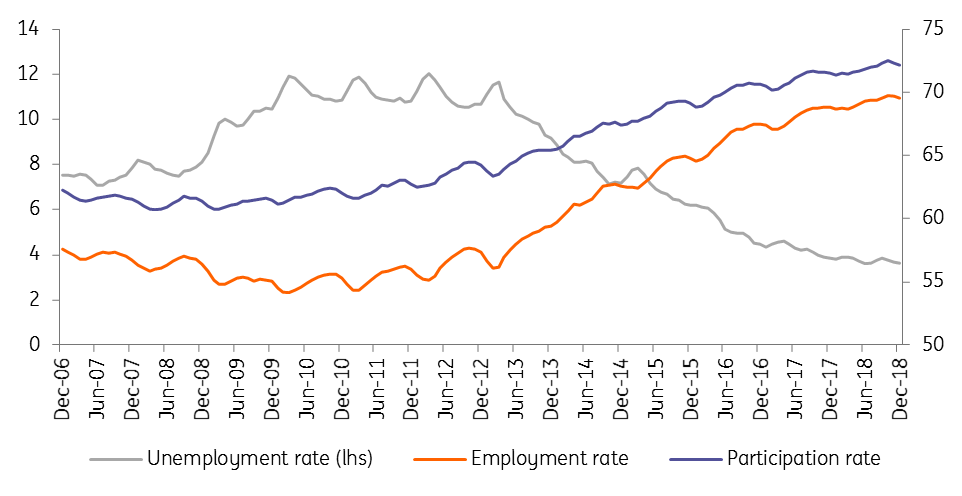Hungary: Labour market reaches a peak
The unemployment rate is down to 3.6%, but job creation slowed in the business sector, suggesting that the labour market might have reached its peak
| 3.6% |
Unemployment rateConsensus (3.6%) / Previous (3.6%) |
| As expected | |
The unemployment rate of the 15–64 age group decreased to 3.6% in December 2018, marking a roughly 0.2 percentage point drop compared to the end of 2017. If we adjust the time series for seasonality, the unemployment rate practically remained unchanged in the second half of last year. The number of employed people is still above 4.4 million, a touch below its record high, showing a 0.4% year-on-year increase.
Labour market trends (%)

The trend-like slowdown of the improvement in the labour market suggests that we might have reached a peak. Against this backdrop, we see total real disposable income of households rising at a slower pace in 2019, meaning that consumption will contribute less to GDP and growth will slow. Another important clue regarding full employment is the level of job creation. The 41k new job vacancies created in 4Q18 is the lowest number since 2016.
The Beveridge curve

The pace of improvement is slowing all around the labour market and the barriers on the supply side are becoming more and more effective. It is really hard to imagine that without any structural reform, the labour market can improve substantially in 2019. We only see an incremental change in the unemployment rate, decreasing to 3.5% by the end of this year.
Download
Download snap